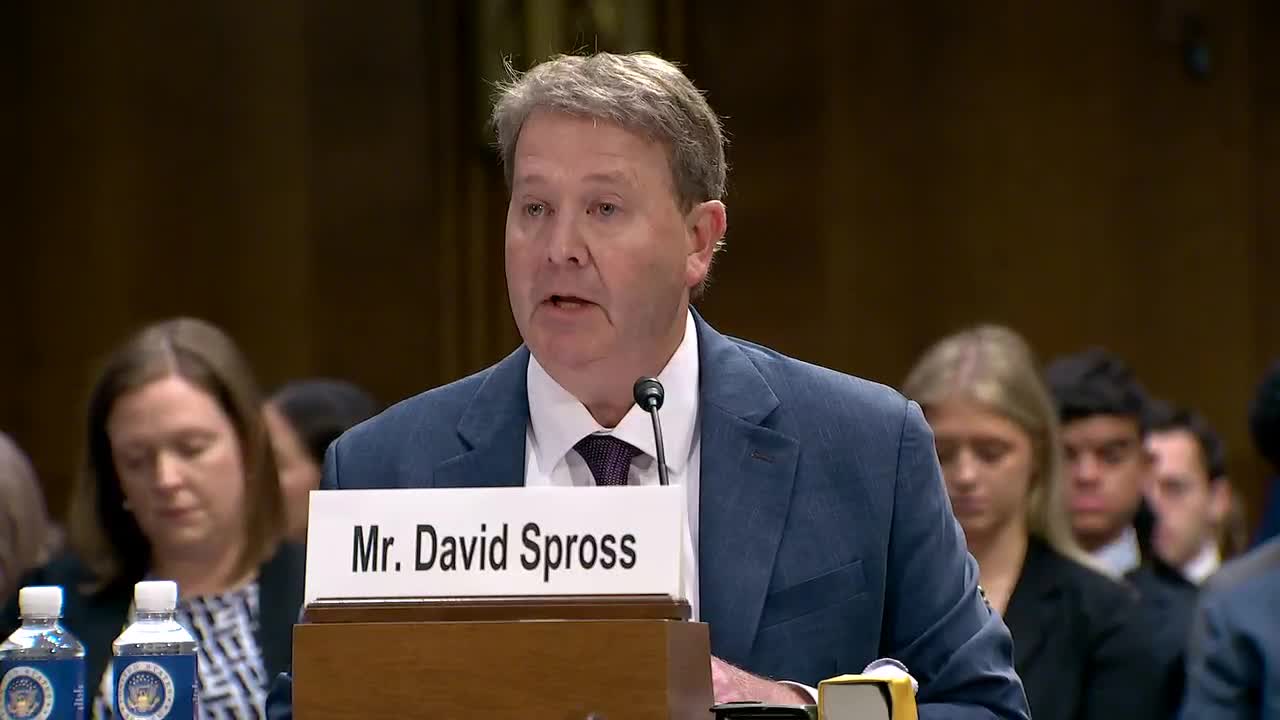FDA Faces Pressure to Combat Youth Vaping Crisis
June 12, 2024 | Judiciary: Senate Committee, Standing Committees - House & Senate, Congressional Hearings Compilation

This article was created by AI summarizing key points discussed. AI makes mistakes, so for full details and context, please refer to the video of the full meeting. Please report any errors so we can fix them. Report an error »

In a recent government meeting, key stakeholders discussed the pressing issue of youth vaping and tobacco harm reduction, highlighting contrasting perspectives on e-cigarette regulation and public health.
Tony Abboud, Executive Director of the Vapor Technology Association (VTA), presented data indicating a significant decline in youth vaping, which has dropped by 61% since the peak of the Juul epidemic in 2019. He attributed this decline to the federal law raising the minimum age for purchasing tobacco products to 21, a measure the VTA supported. Abboud emphasized that only 4.4% of youth currently use e-cigarettes regularly, and he argued that flavors are not the primary reason for youth initiation into vaping. He called for common-sense marketing restrictions to further protect youth while advocating for the inclusion of e-cigarettes in smoking cessation strategies.
Conversely, Dr. Susan Whalley, representing the American Academy of Pediatrics, painted a starkly different picture. She reported that over 2 million children and adolescents still use e-cigarettes, with a significant portion using them daily. Dr. Whalley criticized the tobacco industry's marketing tactics, which she claimed target youth with appealing flavors and packaging. She urged the FDA to take stronger action against unauthorized flavored e-cigarettes, which she believes contribute to the ongoing youth tobacco epidemic.
The meeting underscored the divide between industry representatives advocating for harm reduction through regulated e-cigarette access and public health officials calling for stricter regulations to protect youth. Both sides acknowledged the need for effective solutions, with Abboud urging the FDA to authorize more vaping products and Dr. Whalley calling for the removal of flavored products from the market.
As the discussion continues, the future of tobacco regulation and youth protection remains a critical concern for lawmakers and health advocates alike.
Tony Abboud, Executive Director of the Vapor Technology Association (VTA), presented data indicating a significant decline in youth vaping, which has dropped by 61% since the peak of the Juul epidemic in 2019. He attributed this decline to the federal law raising the minimum age for purchasing tobacco products to 21, a measure the VTA supported. Abboud emphasized that only 4.4% of youth currently use e-cigarettes regularly, and he argued that flavors are not the primary reason for youth initiation into vaping. He called for common-sense marketing restrictions to further protect youth while advocating for the inclusion of e-cigarettes in smoking cessation strategies.
Conversely, Dr. Susan Whalley, representing the American Academy of Pediatrics, painted a starkly different picture. She reported that over 2 million children and adolescents still use e-cigarettes, with a significant portion using them daily. Dr. Whalley criticized the tobacco industry's marketing tactics, which she claimed target youth with appealing flavors and packaging. She urged the FDA to take stronger action against unauthorized flavored e-cigarettes, which she believes contribute to the ongoing youth tobacco epidemic.
The meeting underscored the divide between industry representatives advocating for harm reduction through regulated e-cigarette access and public health officials calling for stricter regulations to protect youth. Both sides acknowledged the need for effective solutions, with Abboud urging the FDA to authorize more vaping products and Dr. Whalley calling for the removal of flavored products from the market.
As the discussion continues, the future of tobacco regulation and youth protection remains a critical concern for lawmakers and health advocates alike.
View full meeting
This article is based on a recent meeting—watch the full video and explore the complete transcript for deeper insights into the discussion.
View full meeting